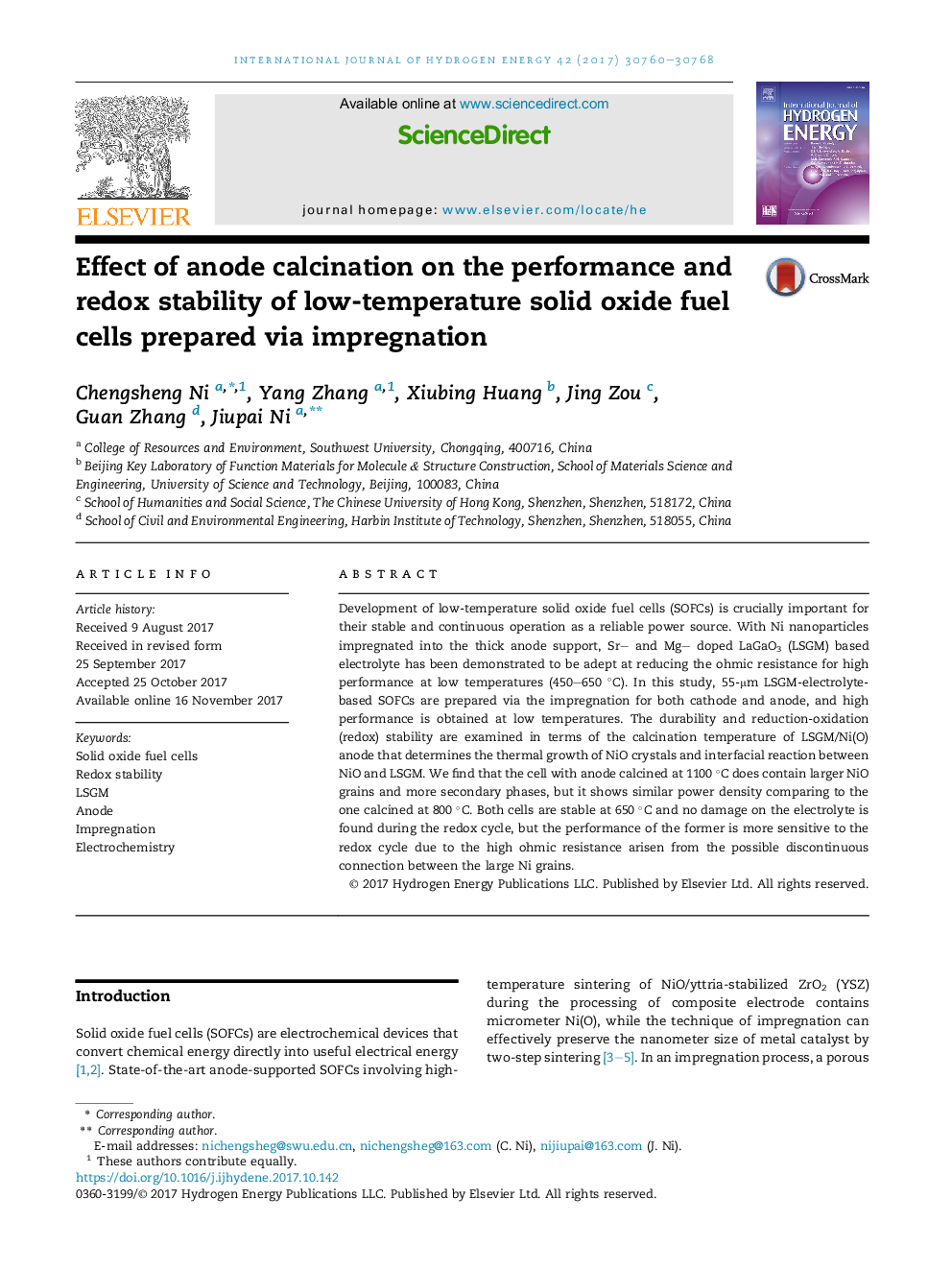| کد مقاله | کد نشریه | سال انتشار | مقاله انگلیسی | نسخه تمام متن |
|---|---|---|---|---|
| 7708765 | 1497325 | 2017 | 9 صفحه PDF | دانلود رایگان |
عنوان انگلیسی مقاله ISI
Effect of anode calcination on the performance and redox stability of low-temperature solid oxide fuel cells prepared via impregnation
ترجمه فارسی عنوان
اثر کالکشن آند در عملکرد و پایداری بازدارندگی سلول های سوختی اکسید جامد با دمای پایین تهیه شده از طریق اشباع
دانلود مقاله + سفارش ترجمه
دانلود مقاله ISI انگلیسی
رایگان برای ایرانیان
کلمات کلیدی
موضوعات مرتبط
مهندسی و علوم پایه
شیمی
الکتروشیمی
چکیده انگلیسی
Development of low-temperature solid oxide fuel cells (SOFCs) is crucially important for their stable and continuous operation as a reliable power source. With Ni nanoparticles impregnated into the thick anode support, Sr and Mg doped LaGaO3 (LSGM) based electrolyte has been demonstrated to be adept at reducing the ohmic resistance for high performance at low temperatures (450-650 °C). In this study, 55-μm LSGM-electrolyte-based SOFCs are prepared via the impregnation for both cathode and anode, and high performance is obtained at low temperatures. The durability and reduction-oxidation (redox) stability are examined in terms of the calcination temperature of LSGM/Ni(O) anode that determines the thermal growth of NiO crystals and interfacial reaction between NiO and LSGM. We find that the cell with anode calcined at 1100 °C does contain larger NiO grains and more secondary phases, but it shows similar power density comparing to the one calcined at 800 °C. Both cells are stable at 650 °C and no damage on the electrolyte is found during the redox cycle, but the performance of the former is more sensitive to the redox cycle due to the high ohmic resistance arisen from the possible discontinuous connection between the large Ni grains.
ناشر
Database: Elsevier - ScienceDirect (ساینس دایرکت)
Journal: International Journal of Hydrogen Energy - Volume 42, Issue 52, 28 December 2017, Pages 30760-30768
Journal: International Journal of Hydrogen Energy - Volume 42, Issue 52, 28 December 2017, Pages 30760-30768
نویسندگان
Chengsheng Ni, Yang Zhang, Xiubing Huang, Jing Zou, Guan Zhang, Jiupai Ni,
